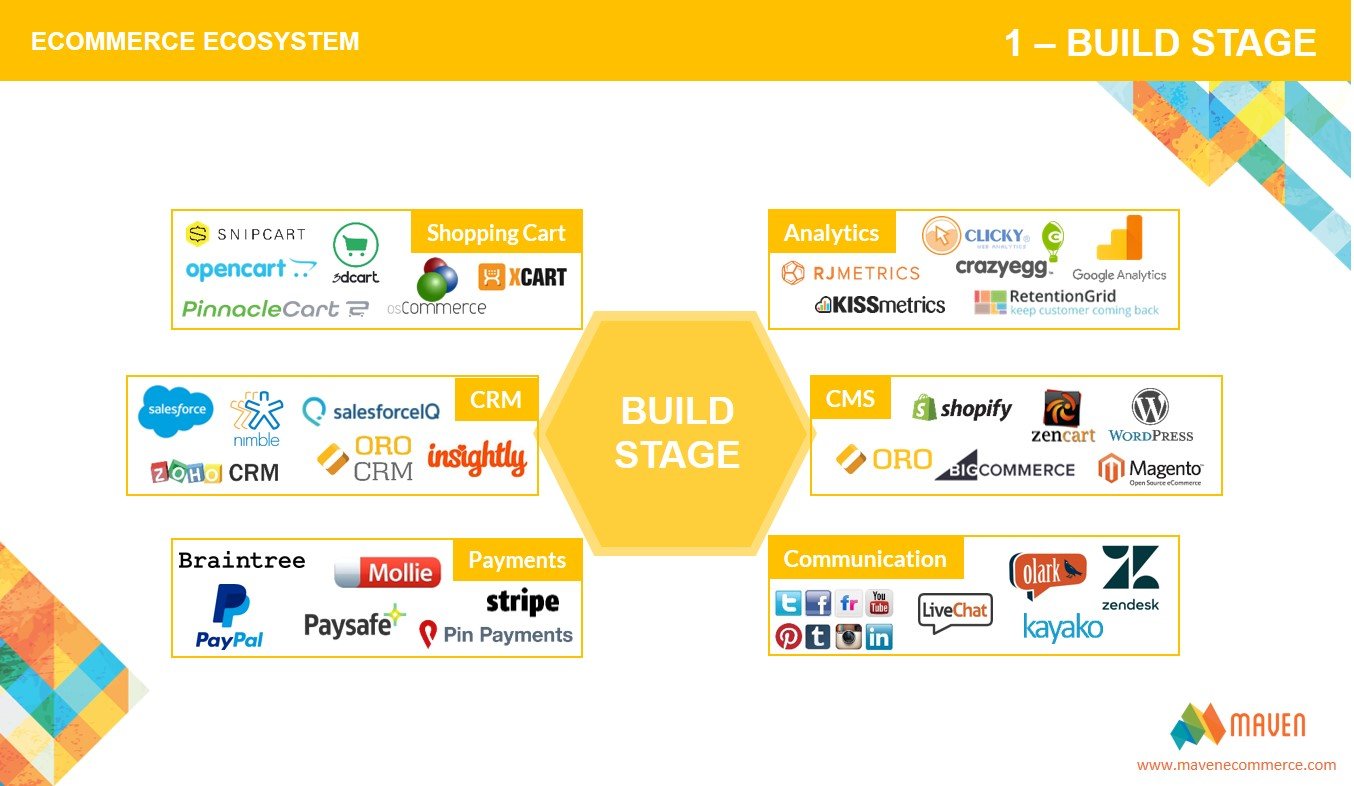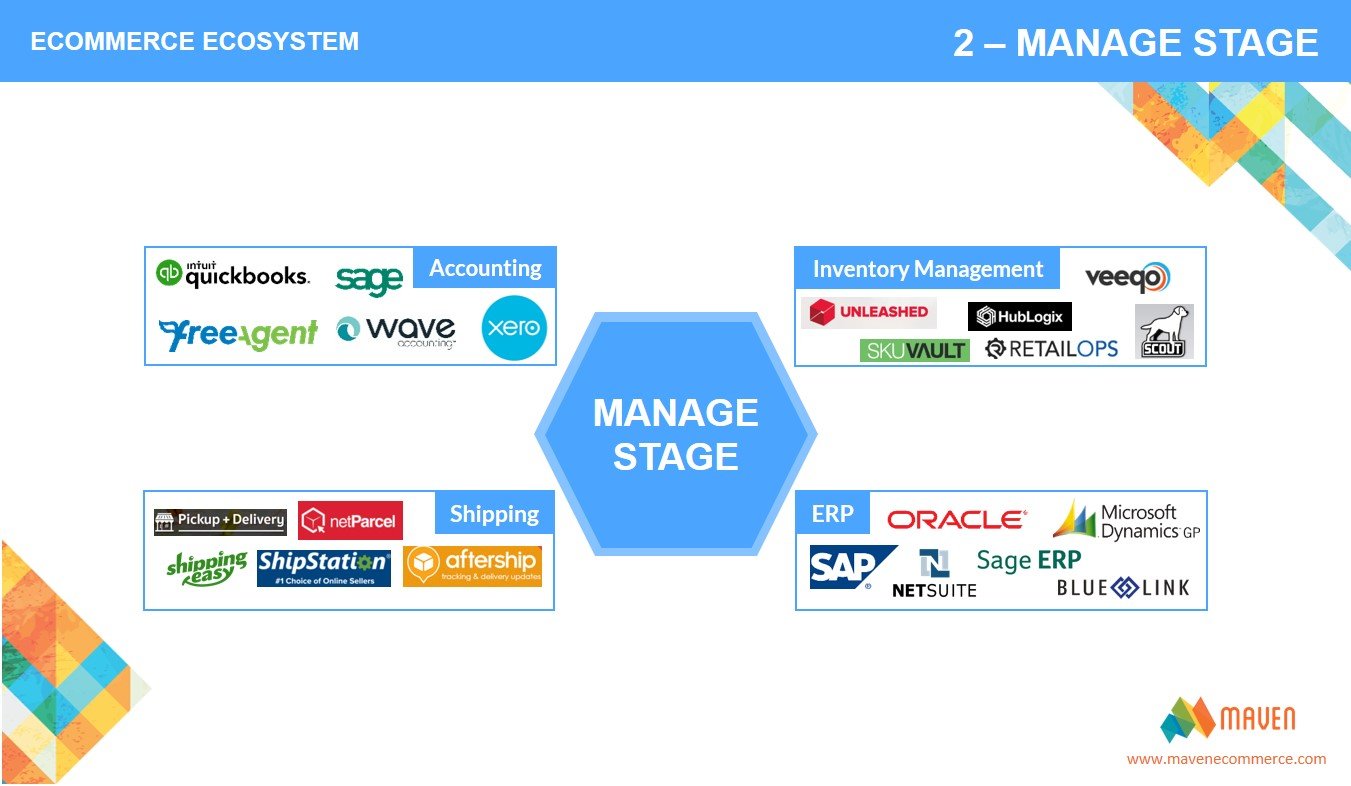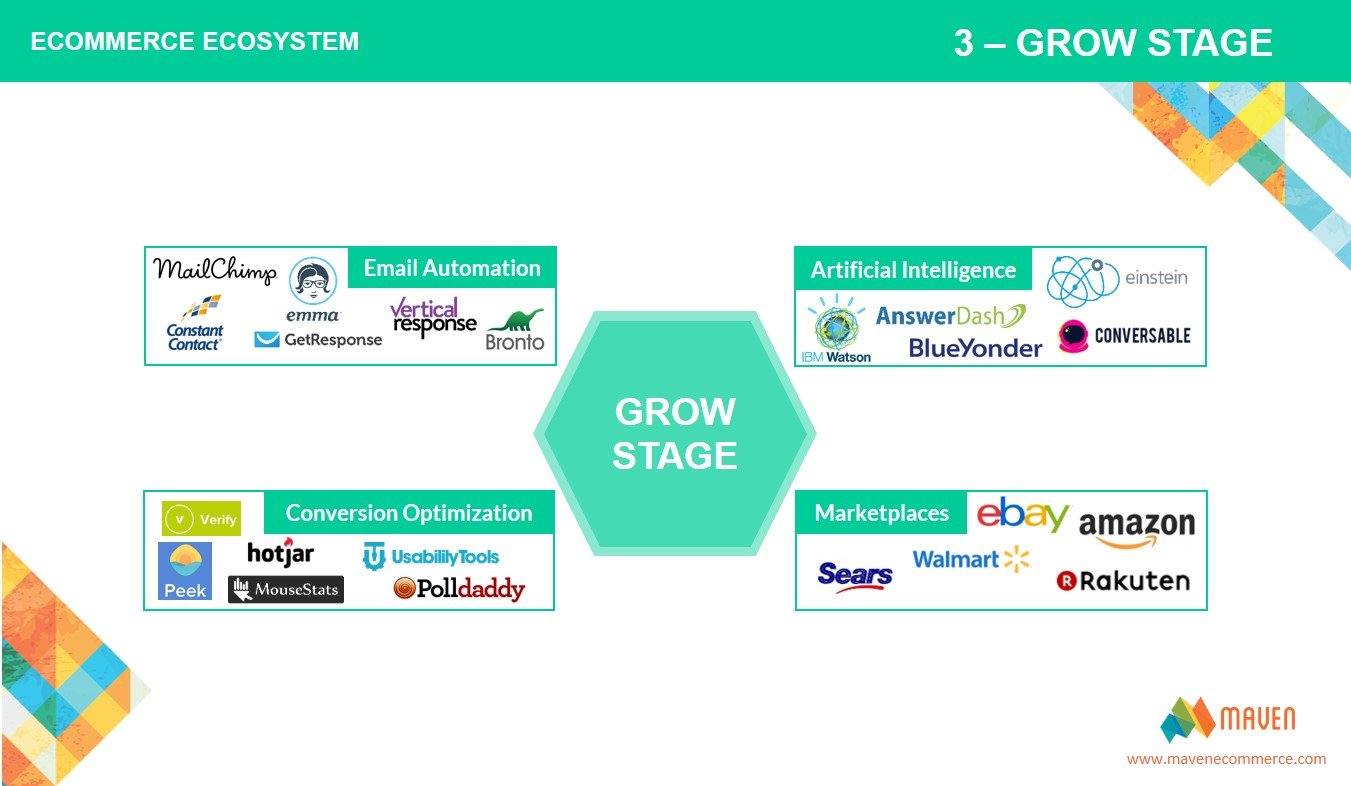Table of Contents
Hide
1. “Build” Stage
It includes all the integrations required to get your website up and running. At this stage think of tools that are common for nearly every eCommerce website on the web. Imagine that you don’t have any goods to sell yet and are just working on general website performance and look. Toolkit for Build Stage:
Toolkit for Build Stage:
- CMS (Content Management System). Content is a king and it should be treated with the royal attitude. CMS integration will help improve the planning, managing, and distribution of your content.
- CRM (Customer Relationship Management). CRM helps to manage interactions with current and potential clients. It includes historical data about every customer/lead which helps plan and improve further interactions.
- Shopping Cart and Payments. Gaining profit is the main goal for every business. You need to make sure the buying process is simple and secure from the moment the product is added to the Shopping Cart till the Checkout process is finished.
- Analytics. “War is ninety percent information.” – Napoleon Bonaparte. There is no easier way to win the competition war than to invest in analytics and become good at it.
- Communication and Customer Support. Don’t let your customers feel like orphans! From live chat and support tickets to email and toll-free phone support, use all possible channels to help the customers in time. But remember, even if the process works like a charm, poor support quality may ruin your business. So follow the example of Zappos and order your customer a pizza!
2. “Manage” Stage
At this point, you may start questioning such a classification. Doesn’t every eCommerce business need shipping or inventory management? And the answer is “no”. If you sell digital goods or offer SaaS. In such a case there is no warehouse and no shipping process but the business itself still can be called eCommerce. It includes all the tools which are common for brick-and-mortar stores.
Toolkit for Manage Stage:
It includes all the tools which are common for brick-and-mortar stores.
Toolkit for Manage Stage:
- Accounting. If you’re just starting, you may think “Hey, I can do the 2+2 math and send 5 invoices per month manually, why do I even need accounting software?”. And you will be right. To some point. But as your business grows, you’ll definitely need to start using accounting software eventually. So it’s better to integrate and get familiar with it initially.
- Inventory and Warehouse Management/ERP (Enterprise resource planning). If your business model is other than Dropshipping (or you sell digital goods), you’ll need a tool to manage the inventory. Otherwise, customers will be ordering products that are no longer in stock, and the business may go bankrupt in terms of a few days. Note that ERP is much more than just inventory management, but to keep this article simple we won’t dive into it any deeper.
- Shipping and Order Management. This one is quite obvious. If you sell physical goods, your business is all about shipping and fulfillment. It doesn’t matter how pretty the website is or how good are the products you sell. If you’re unable to deliver on time, the customers will abandon you and will never make a second order.
3. “Grow” stage
If you’re done with the previous stages and the website runs like a swiss watch, it’s time to consider the tools that can help increase your sales. This stage is all about the tools which help your business grow and scale.
Toolkit for Growth Stage:
This stage is all about the tools which help your business grow and scale.
Toolkit for Growth Stage:
- Email Automation. Do you want to re-engage inactive customers, decrease the number of abandoned carts or ask for feedback after the purchase? If so, email automation is just what you need. Email automation tools let you create email workflows that are automatically sent upon a certain trigger.
- Marketplaces integration. If you already have a website and plan to start selling on eBay/Amazon/Walmart etc., then integrating your inventory with these marketplaces is a must. In such a case there is no need to add products manually. The product inventory will be synced between the website and marketplaces which helps you avoid various inventory management issues like incorrect stock status.
- Conversion Optimization tools. To learn why the customers don’t buy from you or how to make them buy more, you may use various A/B testing, survey, heat map and scroll map tools.
- Artificial Intelligence. AI is conquering the world and eCommerce isn’t an exception. From personal assistants and chatbots to custom recommendations and “smart analytics”, artificial intelligence is penetrating and changing the eCommerce world with the speed of lightning. Not every online store can afford to use AI in its business yet, but as time passes, the implementation costs will drop and AI will become a new standard for electronic commerce.